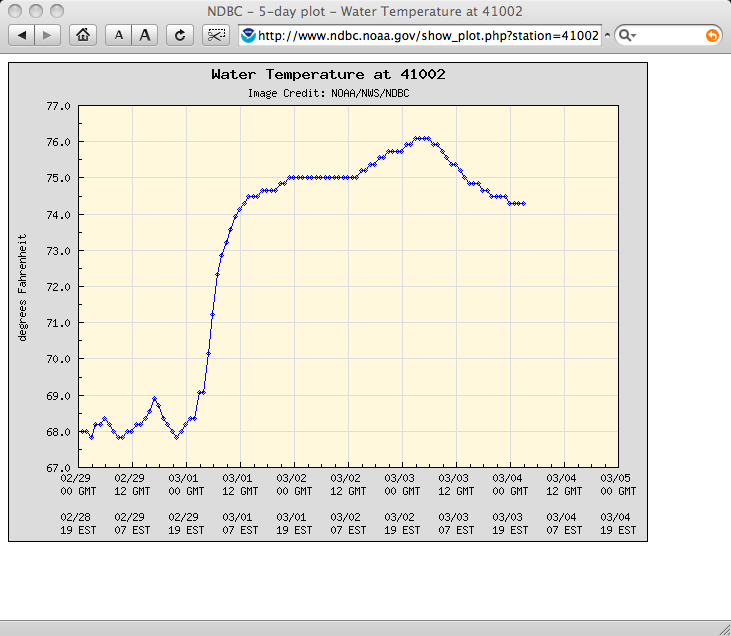The Gulf Stream: MODIS vs. RTG_SST_HR model Sea Surface Temperature
Minimal cloud cover (MODIS true color image) off the US East Coast and over the western North Atlantic Ocean on 03 March 2008 allowed a nice view of the ribbon of warm water temperatures associated with the Gulf Stream, as shown on an AWIPS image of the MODIS Sea Surface Temperature (SST) product at 17:56 UTC (above). MODIS SST values along the Gulf Stream were generally in the 72-79º F (22-26º C) range (yellow to orange colors); clouds over water are depicted with as black on the MODIS SST product. A comparison with the SST analysis field from the High Resolution Real Time Global (RTG_SST_HR) model 18 hours earlier (at 00:00 UTC) demonstrated the advantage of the 1-km resolution MODIS data for resolving the small-scale detail in the structure of warm and cold water eddies that existed on either side of the Gulf Stream axis.
In particular, note Buoy 41002, located south of Cape Hatteras, North Carolina (or about 250 nautical miles east of Charleston, South Carolina): the National Data Buoy Center water temperature data for 41002 (below) revealed that the SST had increased 7-8º F since 29 February 2008 as an eddy of warm water drifted across the buoy location, and the water temperature was in the 74-75º F range during the daytime hours on 03 March. The 17:56 UTC MODIS SST value of 74.2º F in the vicinity of Buoy 41002 was in much better agreement with the NDBC water temperature data (compared to the SST value of less than 69º F at Buoy 41002 indicated by the RTG_SST_HR analysis at 00:00 UTC).
At its greatest, the Gulf Stream is about 100 miles wide and several hundred feet deep — much larger than any river on Earth. It also moves much faster than any river, moving as much as about 140 miles in a single day; in terms of volume per second, the Gulf Stream moves about 1000 times faster than the Mississippi River.



